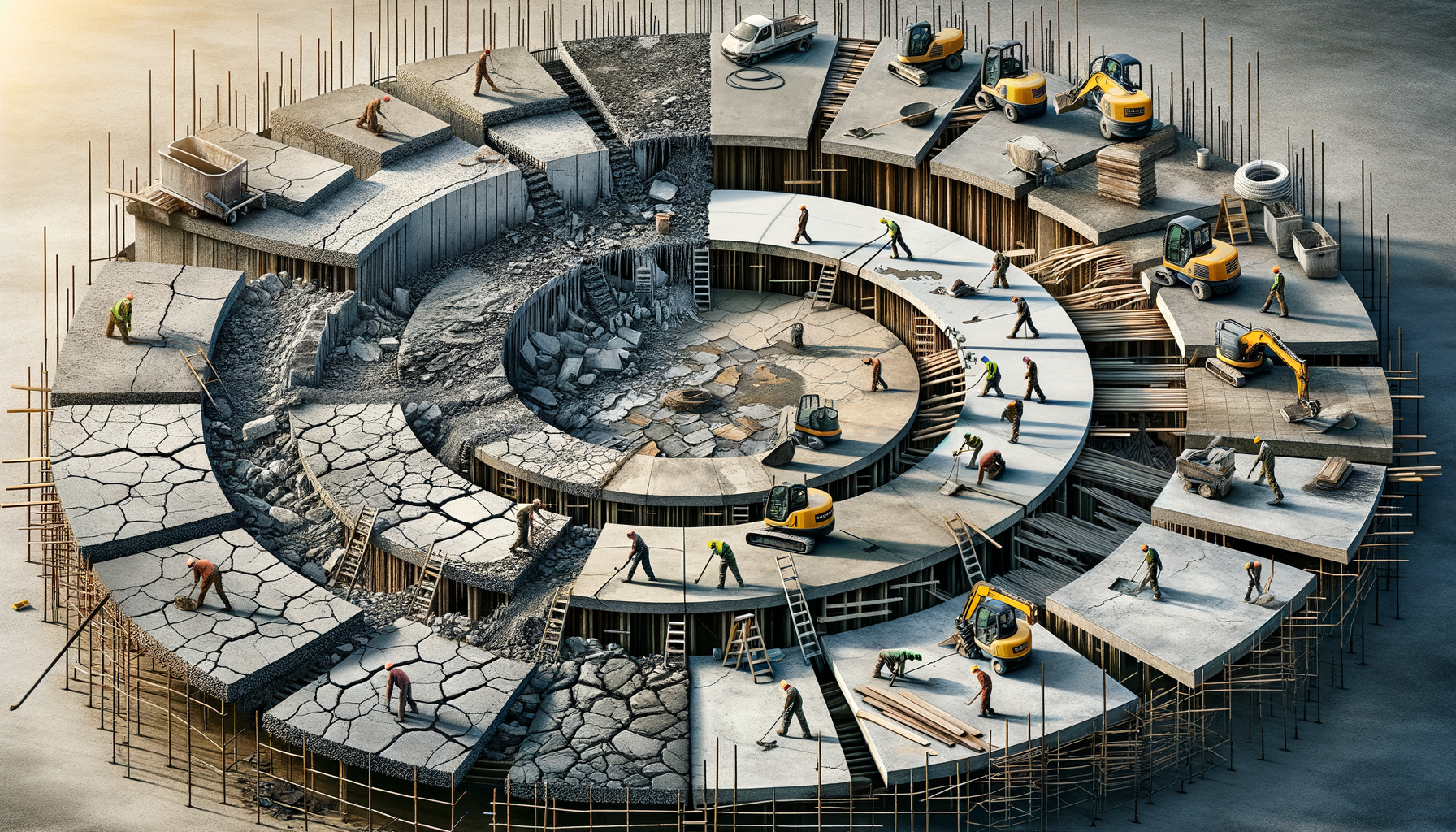Understanding the Need for Concrete Restoration
Concrete surfaces are ubiquitous in modern construction, valued for their durability and strength. However, even the most robust concrete can succumb to the ravages of time and environmental factors. Cracks, spalling, and discoloration are common issues that not only detract from the aesthetic appeal but can also compromise the structural integrity. The importance of restoring concrete surfaces cannot be overstated, as it ensures both safety and longevity.
Concrete restoration is essential for several reasons:
- Safety: Damaged concrete can pose significant safety hazards, such as tripping risks or structural failures.
- Cost Efficiency: Timely repairs can prevent more extensive damage, which would require costly replacements.
- Aesthetic Appeal: Restored surfaces enhance the visual appeal of properties, increasing their market value.
Understanding the underlying causes of concrete deterioration is the first step towards effective restoration. Factors like water infiltration, freeze-thaw cycles, and chemical exposure contribute significantly to the degradation of concrete surfaces. Addressing these issues through proper restoration techniques can significantly extend the life of concrete structures.
Surface Preparation: The Foundation of Successful Restoration
Before any restoration work can begin, proper surface preparation is crucial. This step ensures that repair materials adhere correctly and perform optimally. Surface preparation involves several key processes:
- Cleaning: Removing dirt, oil, and debris is essential for effective adhesion of repair materials.
- Crack Identification: Identifying and assessing the extent of cracks helps in choosing the appropriate repair method.
- Surface Profiling: Creating a rough surface profile can enhance the bonding of repair materials.
Various tools and techniques are employed during surface preparation, including pressure washing, sandblasting, and grinding. Each method has its advantages, depending on the condition of the concrete and the type of restoration required. For instance, pressure washing is effective for removing surface contaminants, while sandblasting can be used for more extensive surface preparation.
Proper surface preparation is the cornerstone of any successful concrete restoration project. It ensures that repair materials bond effectively, leading to durable and long-lasting repairs.
Repair Techniques: Addressing Cracks and Spalling
Once the surface is adequately prepared, the next step is to address the specific issues affecting the concrete. Cracks and spalling are two of the most common problems that require attention. Each requires a different approach for effective restoration.
Crack Repair: Cracks in concrete can occur due to various reasons, including shrinkage, thermal expansion, and structural movement. Repairing cracks involves:
- Routing and Sealing: This involves enlarging the crack along its exposed face and filling it with a suitable sealant.
- Epoxy Injection: For structural cracks, epoxy injection can restore the structural integrity by bonding the crack faces together.
- Polyurethane Foam Injection: This method is used for non-structural cracks to prevent water infiltration.
Spalling Repair: Spalling occurs when the surface layer of concrete flakes off, often due to freeze-thaw cycles or corrosion of reinforcing steel. Repairing spalling involves:
- Removing Damaged Concrete: The spalled area is cut back to sound concrete.
- Applying Repair Mortar: A suitable repair mortar is applied to restore the surface.
- Finishing: The repaired area is finished to match the surrounding surface.
Choosing the right repair technique is crucial for ensuring the longevity and effectiveness of the restoration work. Each method has its specific applications and benefits, making it essential to assess the condition of the concrete thoroughly.
Protective Coatings: Extending the Life of Restored Surfaces
After addressing the immediate repair needs, applying protective coatings can significantly extend the life of restored concrete surfaces. These coatings provide an additional layer of protection against environmental factors and wear and tear.
Several types of protective coatings are available, each offering unique benefits:
- Sealants: These are applied to prevent water infiltration, which is a common cause of concrete deterioration.
- Epoxy Coatings: Known for their durability, epoxy coatings provide excellent resistance to chemicals and abrasion.
- Polyurethane Coatings: These offer flexibility and UV resistance, making them suitable for outdoor applications.
The choice of protective coating depends on the specific needs of the concrete surface and the environmental conditions it will be exposed to. For instance, surfaces exposed to heavy traffic may benefit from durable epoxy coatings, while outdoor surfaces might require UV-resistant polyurethane coatings.
Applying protective coatings is a proactive measure that can prevent future damage and reduce maintenance costs. It is an integral part of a comprehensive concrete restoration strategy, ensuring that restored surfaces remain in excellent condition for years to come.
Regular Maintenance: Sustaining the Benefits of Restoration
Concrete restoration is not a one-time solution. To sustain the benefits of restoration efforts, regular maintenance is essential. This involves periodic inspections and timely interventions to address any emerging issues before they escalate.
Key maintenance practices include:
- Routine Cleaning: Regular cleaning prevents the buildup of dirt and contaminants that can cause damage.
- Inspection for Cracks: Periodic inspections help in identifying new cracks or other signs of deterioration.
- Reapplication of Sealants: Over time, protective sealants may wear off and require reapplication to maintain their effectiveness.
Implementing a regular maintenance schedule can significantly extend the life of concrete surfaces and ensure that they remain safe and visually appealing. It is a cost-effective strategy that complements the initial restoration efforts, providing lasting benefits.
In conclusion, restoring concrete surfaces involves a combination of proper preparation, effective repair techniques, protective coatings, and ongoing maintenance. By understanding and implementing these approaches, property owners can ensure the longevity and safety of their concrete structures.




Leave a Reply